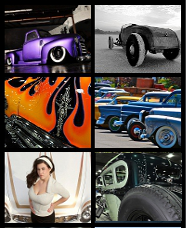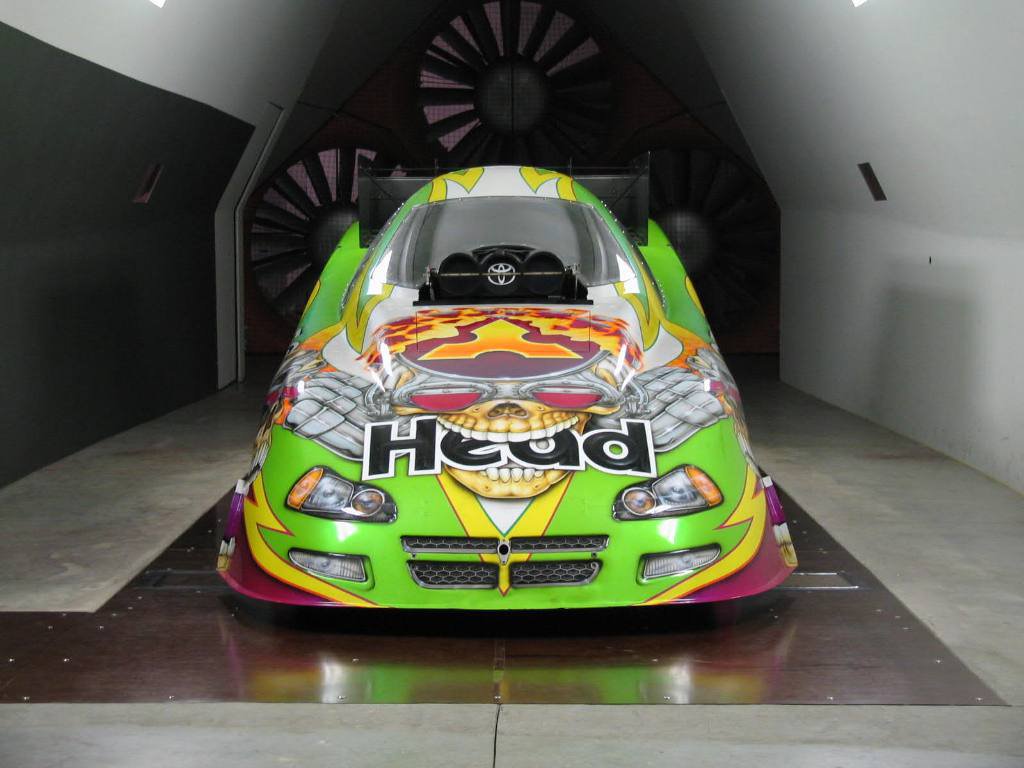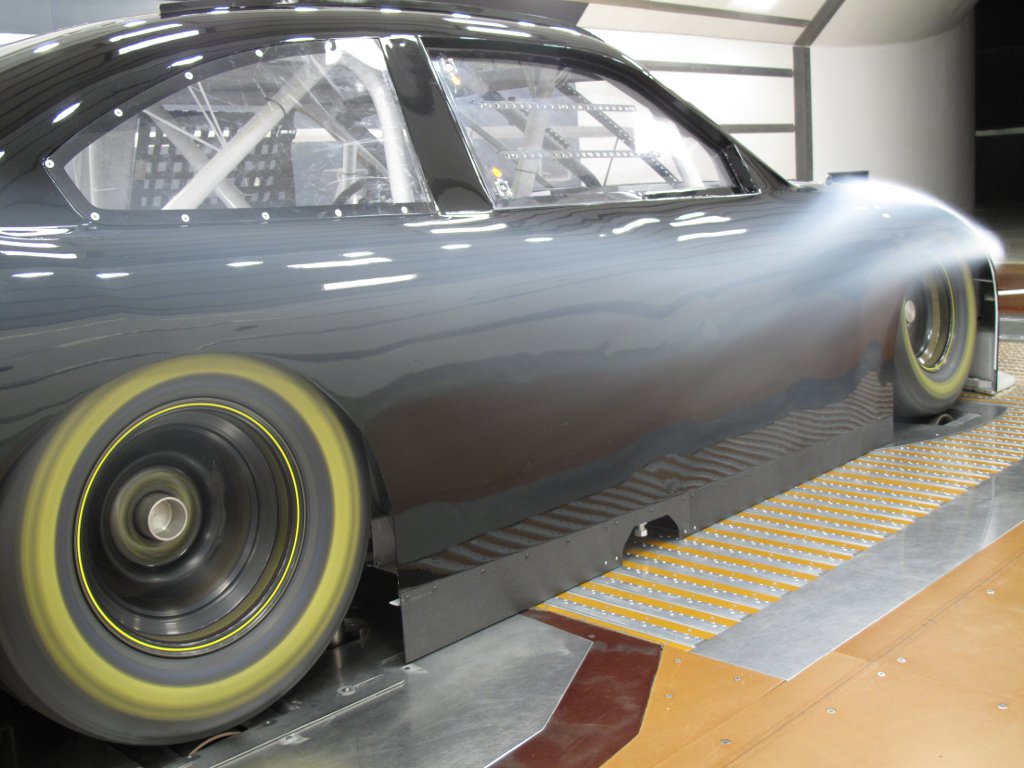Wind Tunnel Testing: Is it just blowing smoke?
Race Tech in a Wind Tunnel: Horsepower and Aerodynamics
Story by Dave Salazar of A2 Wind Tunnel:
Bonneville is the Mecca of speed and every year land speed race teams journey to the historic site to see if they can go faster than the year before. Top speed records can be so close that sometimes the difference from being a hero to being a zero can be 1 mph or less. Whether it’s a production based car, roadster, lakester, streamliner, motorcycle, or some other rodders creation, there are some major obstacles to overcome in order to reach each vehicles maximum potential (SPEED!). The two major hurdles in land speed racing that I am going to discuss are horsepower and aerodynamics. How do they relate and why something that you cannot see such as air can be your biggest competitor on the salt.
Horsepower is something that any gear head can relate to and we all can’t seem to ever get enough… But as we all know, it costs money for each pony, and the more you need the more it will cost because as an engine starts to reach its limits it will start to cost more dollars per horsepower ($/HP). For Bonneville, the size of your wallet is “typically” going to dictate the speed range you can run because the faster the speeds the more horsepower (money) and technology you’ll need to achieve higher and higher speeds.
We’ve all heard about the top NASCAR & F1 race teams’ wind tunnel testing, but what do they learn and how do they apply this technology to the race track? A wind tunnel is simply a testing laboratory with a controlled environment that really only has to do two things, but it must do these two things very well:
- Have a balance (scale) that is very precise in order to measure the smallest of changes
- The wind tunnel must characterize the air flow around the object (in this case a racecar) very well
All wind tunnels are simulations and they each have their own limitations. There are entire books dedicated to wind tunnel design, so I am not going to get into wind tunnel design as much as I will about basic wind tunnel testing and the benefits aero testing can have on a race program.
Everyone has driven down the road with their hand out the window and felt the different forces of the air when you have your palm to the oncoming air or facing down toward the road. This is the same principle as a wind tunnel, but with the race car connected to a precision balance, the change can be measured in some cases down to ounces that can help engineers determine if the change is “good or bad” for the application.
Most wind tunnel balances can measure in 6-components meaning that it will measure forces forward, backward, up, down, left, and right. The terminology for this is broken down into Drag, Lift (- lift = downforce), and Side Force. Every one of these forces is studied in order to gain knowledge of what is happening aerodynamically to a race car. Despite what most people believe, smoke is rarely utilized during testing, but can be used as a visual aid for separation and stagnation areas of a car. It’s also a great aid for pictures since we can’t actually see the air.
Drag reduction is always associated with wind tunnel testing and although very important, the over all balance of the car can be just as significant. There’s no ideal template when it comes to race car aerodynamics because there are various applications and style of race cars. The bottom line in any form of racing is performance and speed, but some things need to be defined in order to set a race car up to achieve that speed.
First question is what type of racing will the car be set up for? A NASCAR Sprint Cup car racing at Charlotte Motor Speedway is going to have a different aero package than a Cup car running at Daytona Speedway. Charlotte will have the teams looking for maximum downforce and balance front to rear for high corner speed and will be an entirely different aero package than a Cup car running at Daytona where limited horsepower due to engine restrictor plates makes drag reduction more important and aero balance might be compromised in order to reduce the drag.
Landspeed racing is similar to Daytona, but doesn’t mean the main focus is exclusively on drag because most production based cars will create lift and can become very unstable at high speeds. This becomes important because if you can’t get the horsepower into the salt you are just spinning your wheels… (pun intended) and adding ballast (weight) to correct an aerodynamic instability can lead to some major problems.
Aero forces are affected by a velocity squared function (v^2)meaning that every time you double your speed the forces increase by a factor of 4. (2 squared equals 4) Using some simple numbers, let’s say a racecar has 200 lbs of drag and 100 lbs of lift at 100 mph. This would mean that at 200 mph there would be 800 lbs of drag and 400 lbs of lift. Just when you get over that fact, the next one will really grab your attention. Horsepower is a velocity cubed function (v^3) meaning that every time you double your speed the horsepower required going that speed goes up by a factor of 8! (2 x 2 x 2 = 2 cubed = 8) So, if it takes 75 HP to run 100 mph then it would take 600 HP to run 200 mph and 2000 HP to reach 300 mph!! Every ones eyes should be really big right now and this is where wind tunnels have been beneficial for race teams looking for more speed and performance.
When you either run at a high speed or with a limited horsepower application it can cost less money to reduce the drag by improving aerodynamics. Reducing drag, thereby reducing the horsepower, can be more effective for running at higher speeds than trying to squeeze more horsepower from the engine.
Say this again…
The question then becomes how much would your engine builder charge for an extra 50 HP? Or, how much would it cost to reduce the horsepower required by 50 HP in a wind tunnel? Due to rules or restrictions, some engines can be at their max performance. In that case, no amount of money (or maybe severely ridiculous amounts) will add more horsepower. Your only option is to attack from the aero direction with the help of a wind tunnel. (Click to see images full-size)
We all know, in close competition even the smallest of improvements can be the difference between winning and losing or setting a record. In the 2010 Daytona 500, 1.7 second separated 43 qualifiers. The payout difference was $1,508,450 for the winner and $261,424 for the last. That’s over a 1.2 million dollar difference in payout, and in the close competition of NASCAR, every 0.1 second can count.
Stay tuned for part 2 of A2 Wind Tunnel’s details of wind tunnel testing. Just how much improvement is possible? And how many horsepower would that equate to? Thanks for a great story Dave!











Very cool! Love wind tunnel pics and seeing how air flows (or doesn’t so well) over different designs. Love that old coupe LSR in the tunnel.